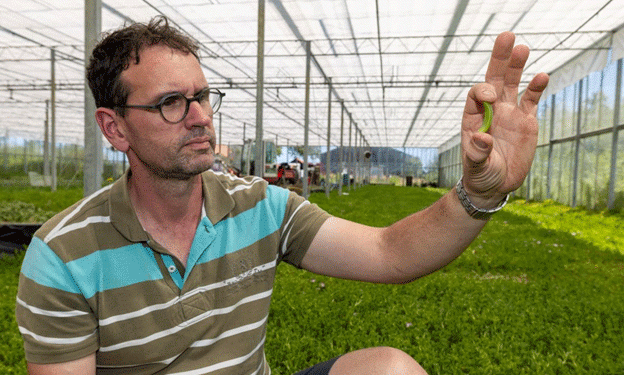Sea fennel (Crithmum maritimum) and sea beans (Salicornia europaea), often referred to as samphire, are not new to the culinary world, especially in coastal regions. However, their cultivation in a controlled greenhouse environment, particularly in a cold greenhouse, is relatively novel. These plants are traditionally found in saline coastal environments, making them well-suited for regions like Zeeland, which is known for its extensive coastlines and rich agricultural history.
Cold Greenhouse Cultivation
Cold greenhouse farming is an energy-efficient method where the greenhouse is not artificially heated, relying instead on natural light and ambient temperatures to sustain the crops. This method is particularly advantageous for cultivating sea fennel and sea beans, as it mimics their natural growing conditions without the need for high energy inputs. Bil’s approach leverages the natural climate of Zeeland, which, with its abundant sunshine and mild maritime weather, provides an ideal setting for these salt-tolerant plants.
Nutritional and Environmental Benefits
Both sea fennel and sea beans are valued not only for their unique flavors but also for their nutritional benefits. Sea fennel is rich in vitamins A, C, and E, along with essential minerals like potassium, calcium, and magnesium. Sea beans, on the other hand, are known for their high fiber content and significant levels of vitamins C and K. These nutritional profiles make them excellent candidates for inclusion in diets focused on health and sustainability.
From an environmental perspective, sea vegetables like these are particularly promising. Their ability to thrive in saline conditions reduces the need for freshwater resources, a critical advantage in the context of global water scarcity. Additionally, their cultivation has minimal environmental impact, making them an attractive option for farmers looking to diversify their crops while adhering to sustainable practices.
Market Potential and Protein Transition
The growing interest in plant-based diets and the protein transition—shifting from animal to plant-based protein sources—presents a significant market opportunity for sea vegetables. Bil and Elenbaas believe that sea fennel and sea beans can play a crucial role in this transition, offering a sustainable and nutritious alternative to traditional protein sources.
In Europe, the demand for plant-based foods has been steadily increasing, driven by consumer awareness of health and environmental issues. Sea vegetables, with their high nutrient density and low environmental footprint, are well-positioned to capitalize on this trend. Furthermore, the unique flavor profiles of sea fennel and sea beans offer culinary appeal, particularly in gourmet and health-conscious markets.
The cultivation of sea fennel and sea beans in cold greenhouses on Schouwen-Duiveland is a promising example of how traditional farming practices can be adapted to meet the demands of modern, sustainable agriculture. By exploring the potential of these sea vegetables, farmers like Aart-Jan Bil are not only contributing to the diversification of agricultural products but also supporting the global shift towards more sustainable and health-conscious food systems. As the protein transition gains momentum, the role of sea vegetables in the agricultural landscape is likely to expand, offering new opportunities for farmers and consumers alike.










